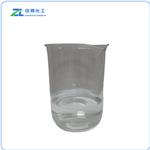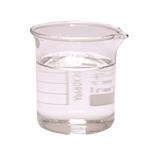Chemical Properties
colourless liquid
Chemical Properties
1-Amino-2-propanol has a fishy odor.
Occurrence
Reportedly present in sherry.
Uses
Synthetic and
semisynthetic machine lubricating/cutting oil formulations
have included isopropanolamine, diisopropanolamine, and
triethanolamine, together with nitrites; consequently the EPA has promulgated standards regarding the composition
of cutting fluids. No additional uses were found in the
literature.
Uses
Amino-2-propanol is used to study the effect of temperature and water content on the molecular structure and hydrogen bonding of amino-2-propanol, which has been examined by Fourier transform near-infrared (FT-NIR) spectroscopy. Also used in used in the synthesis of protein kinase CK2 inhibitors used in the treatment of neoplasia and other infective diseases.
Uses
Amino-2-propanol can be used as a reactant to prepare:
- 5-methyl-2-oxazolidinone by oxidative carbonylation reaction using Pd(OAc)2/I2 catalyst.
- Bio-based polyurethanes by reacting with epoxidized soybean oil via ring-opening and amidation reaction.
It can also be used as a solvent as well as a template to synthesize layered aluminophosphate containing a racemic mixture of isopropanolamine.
Definition
ChEBI: Any amino alcohol that is propan-2-ol substituted by an amino group at position 1.
Preparation
By employing Salmonella, mutatant cobD, and aminopropanol
Aroma threshold values
Detection at 28 ppm in water
General Description
A colorless liquid with a slight ammonia-like odor. Less dense than water and soluble in water. Flash point 165°F. Corrosive to metals and tissue. Vapors are heavier than air. Produces toxic oxides of nitrogen during combustion. Used in plastics, paints, cutting oils, and specialized cleaning compounds.
Air & Water Reactions
Water soluble.
Reactivity Profile
Amino-2-propanol is an aminoalcohol. Amines are chemical bases. They neutralize acids to form salts plus water. These acid-base reactions are exothermic. The amount of heat that is evolved per mole of amine in a neutralization is largely independent of the strength of the amine as a base. Amines may be incompatible with isocyanates, halogenated organics, peroxides, phenols (acidic), epoxides, anhydrides, and acid halides. Flammable gaseous hydrogen is generated by amines in combination with strong reducing agents, such as hydrides.
Health Hazard
Vapor irritates eyes and nose. Liquid causes local injury to mouth, throat, digestive tract, skin, and eyes.
Fire Hazard
Special Hazards of Combustion Products: Irritating vapors generated when heated.
Safety Profile
Poison by intraperitoneal route.Moderately toxic by ingestion and skin contact. A skin andsevere eye irritant. Moderately flammable in presence ofheat, flame, sparks, powerful oxidizers. Ignites on contactwith cellulose nitrate of high surface area. C
Toxics Screening Level
The initial threshold screening level (ITSL) for monoisopropanolamine is
15 μg/m3 based on an annual averaging time.





